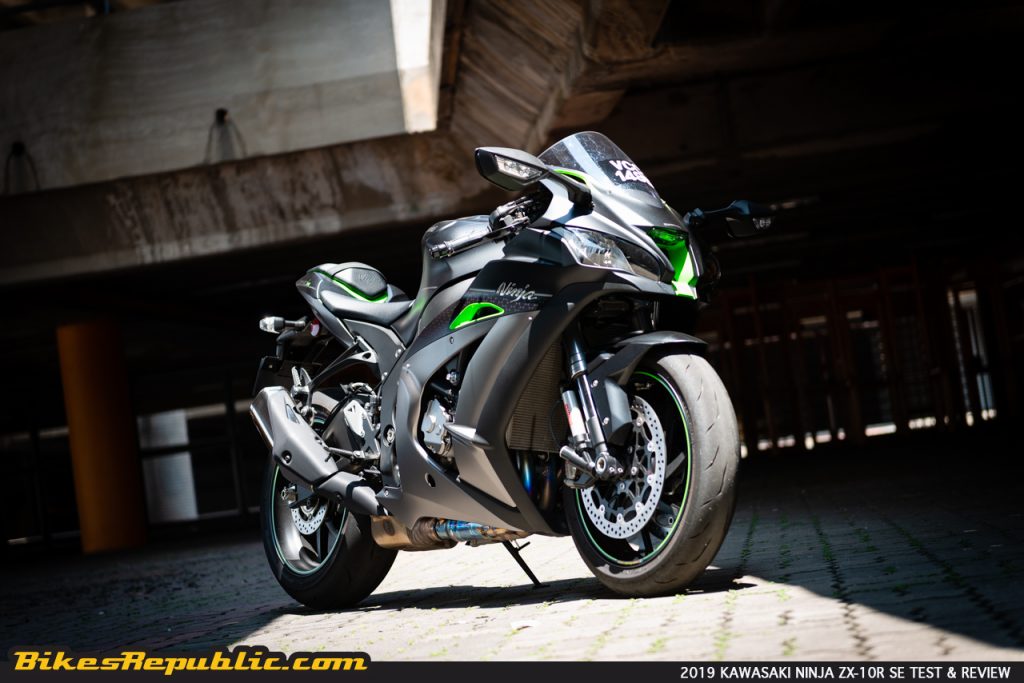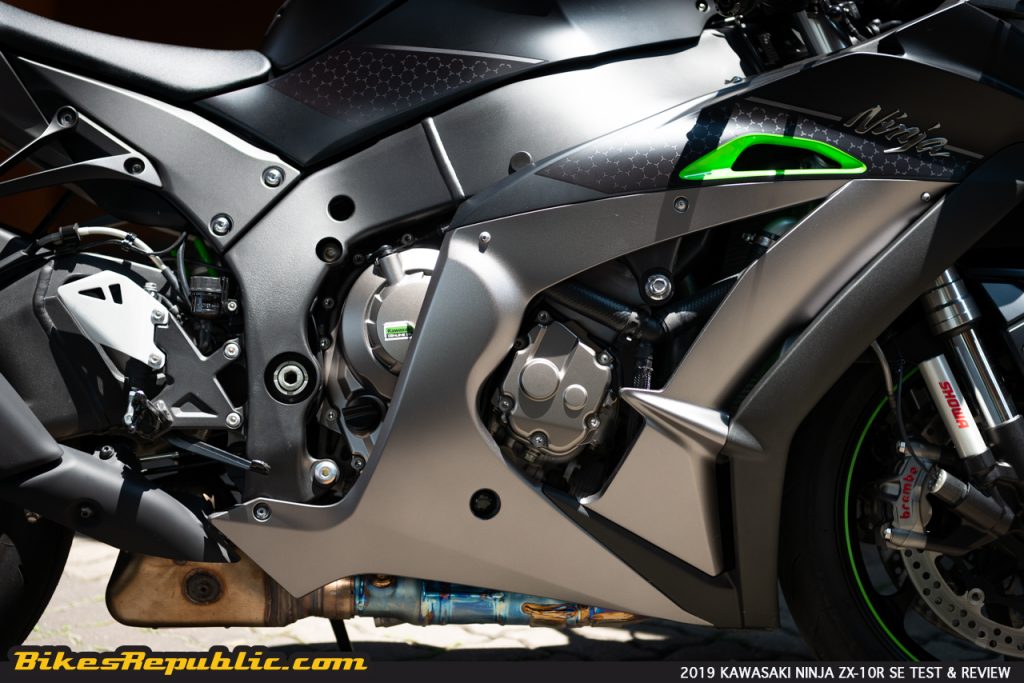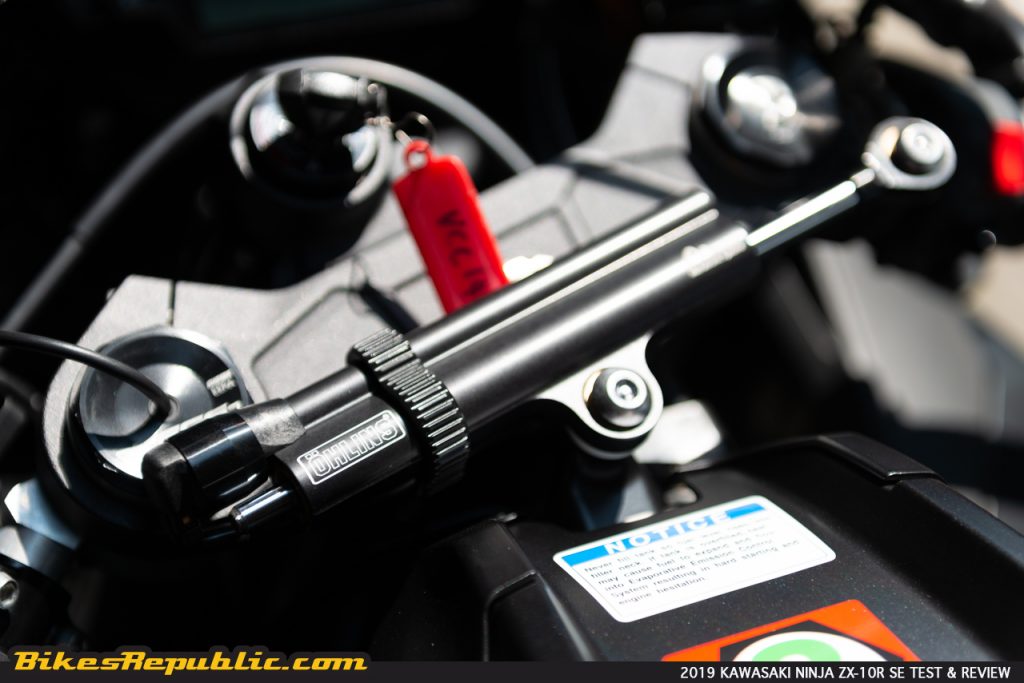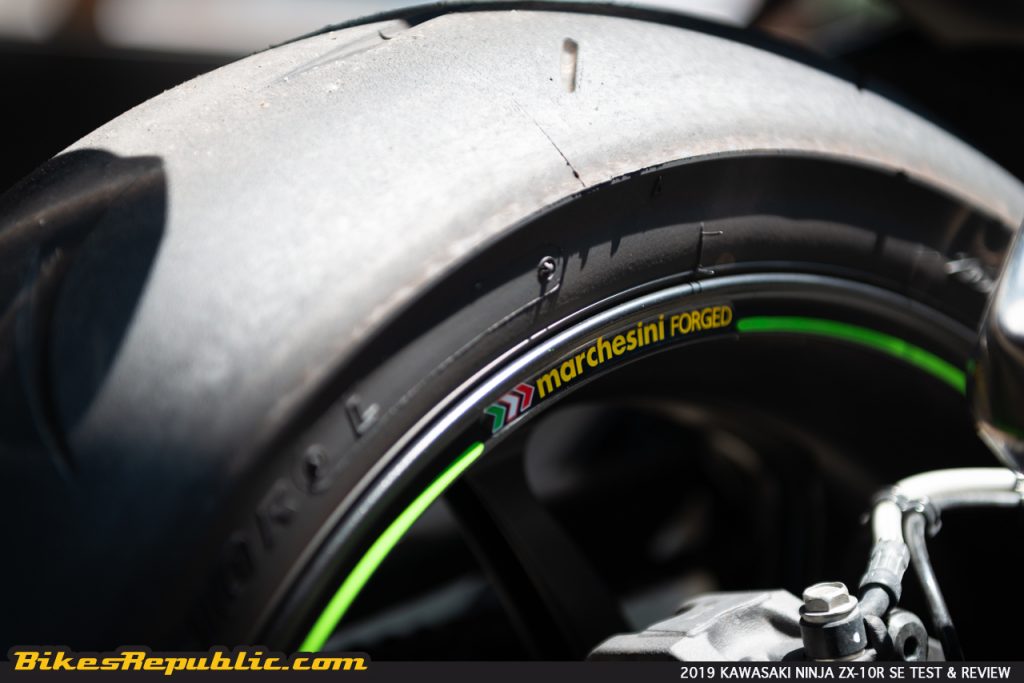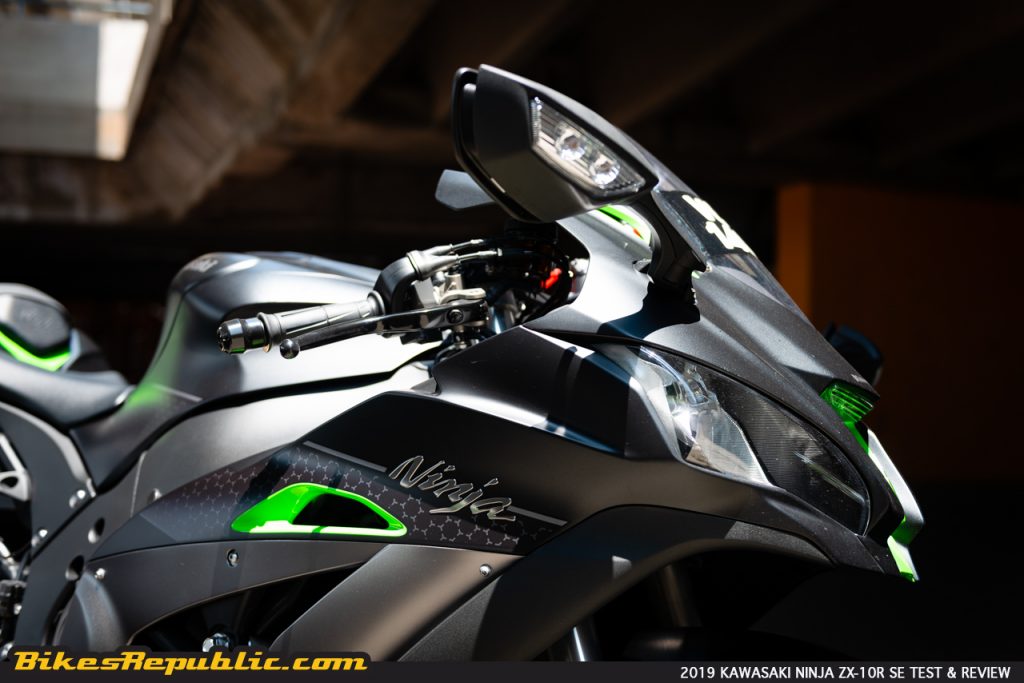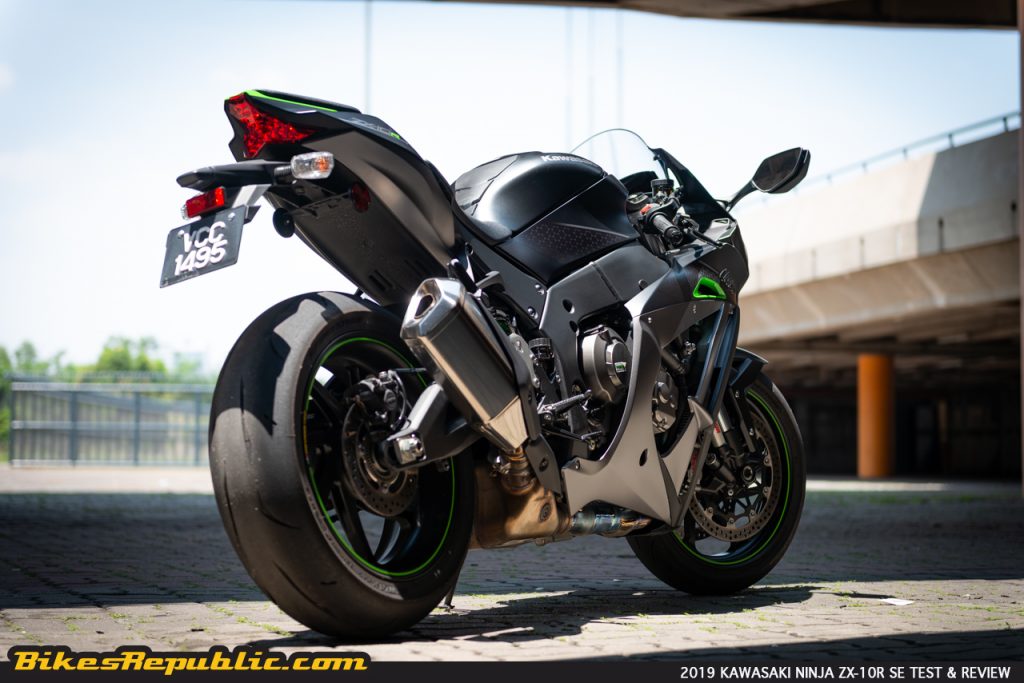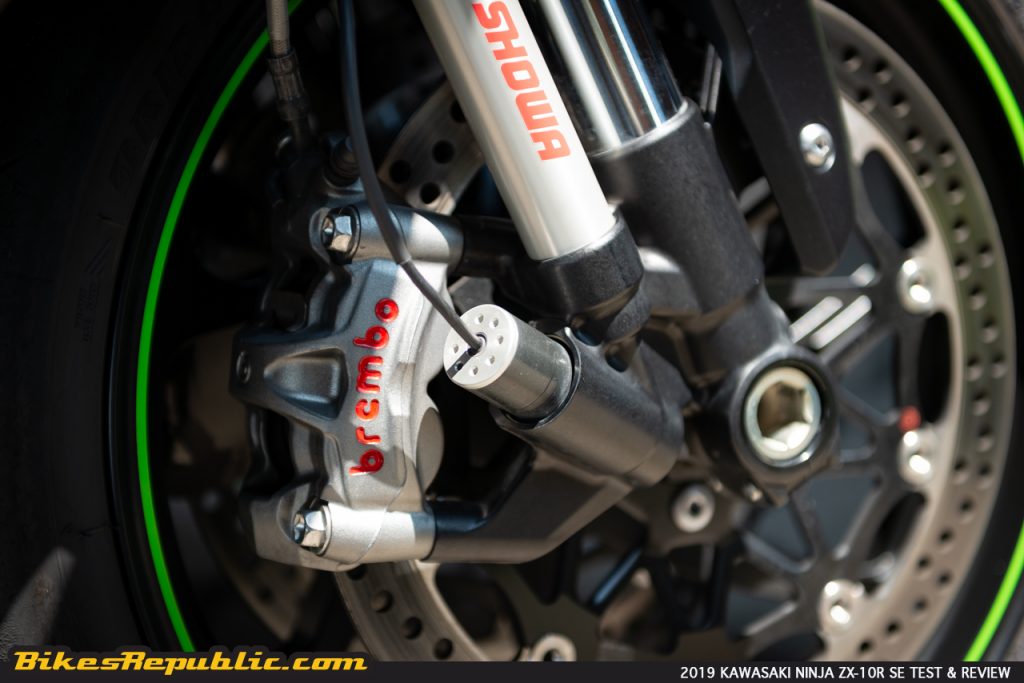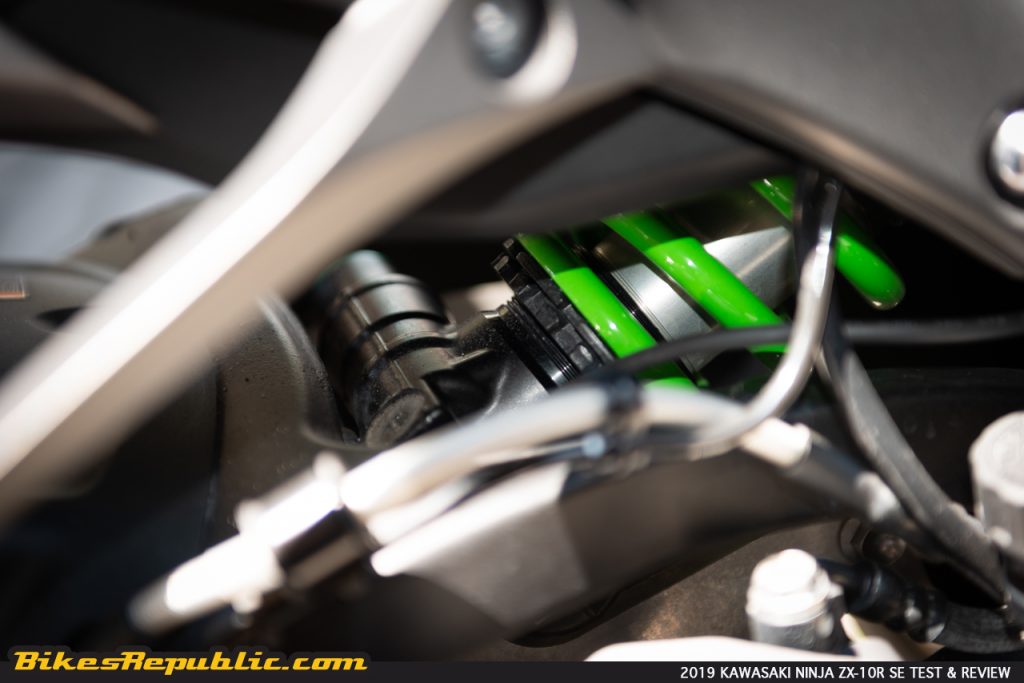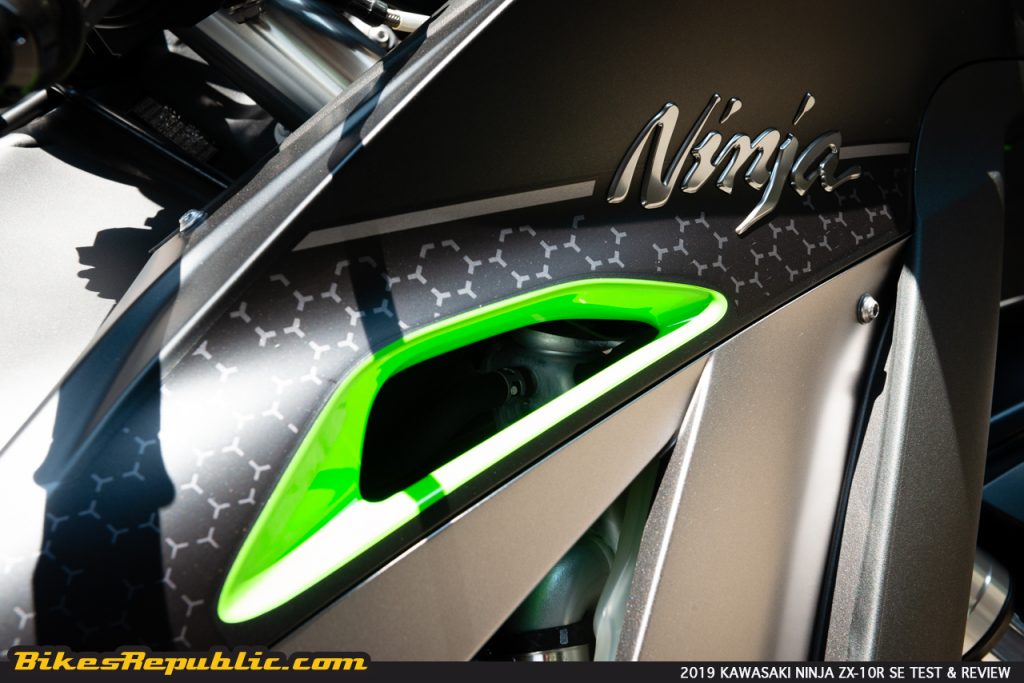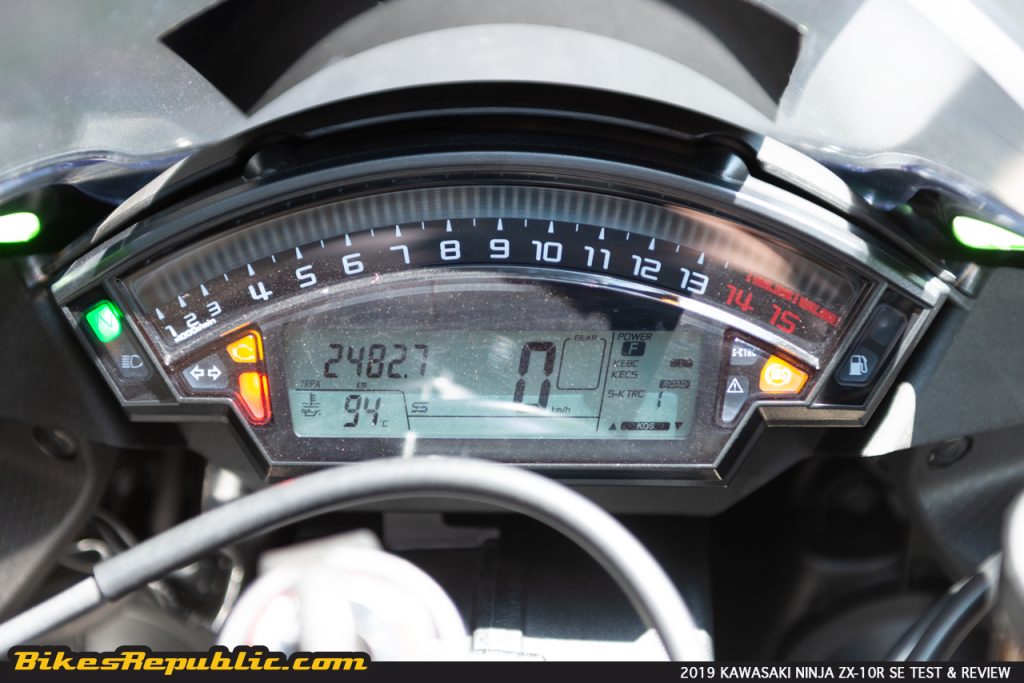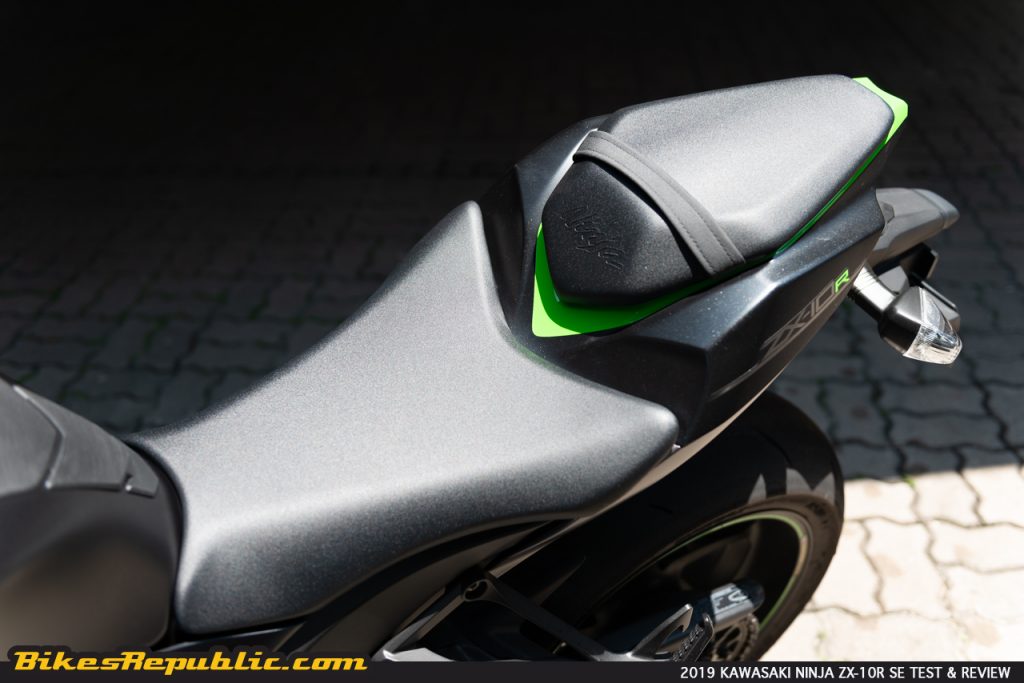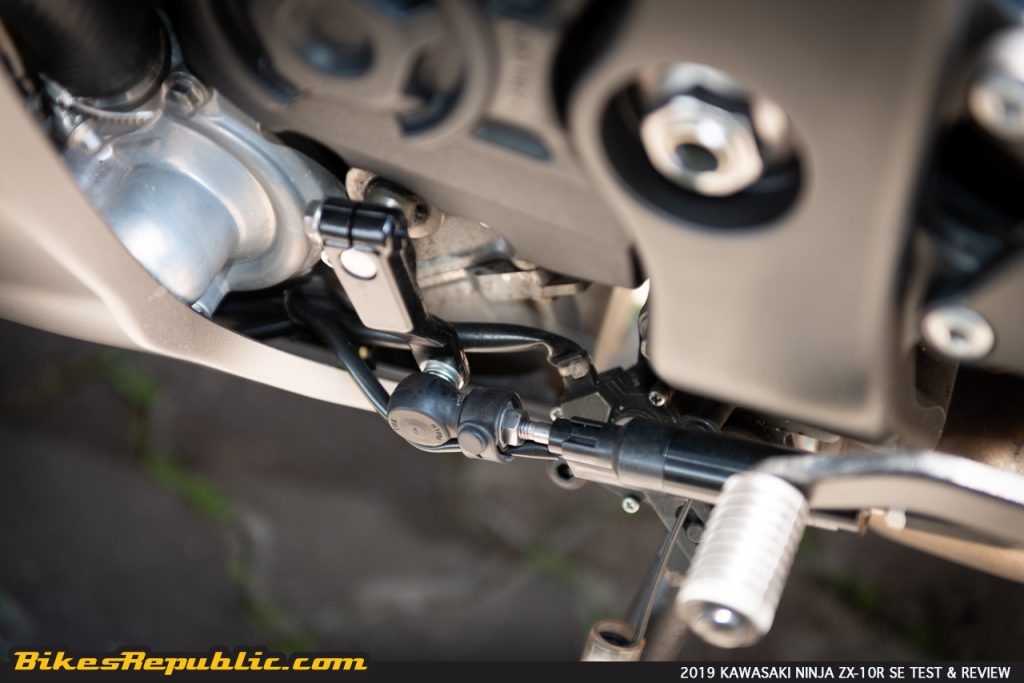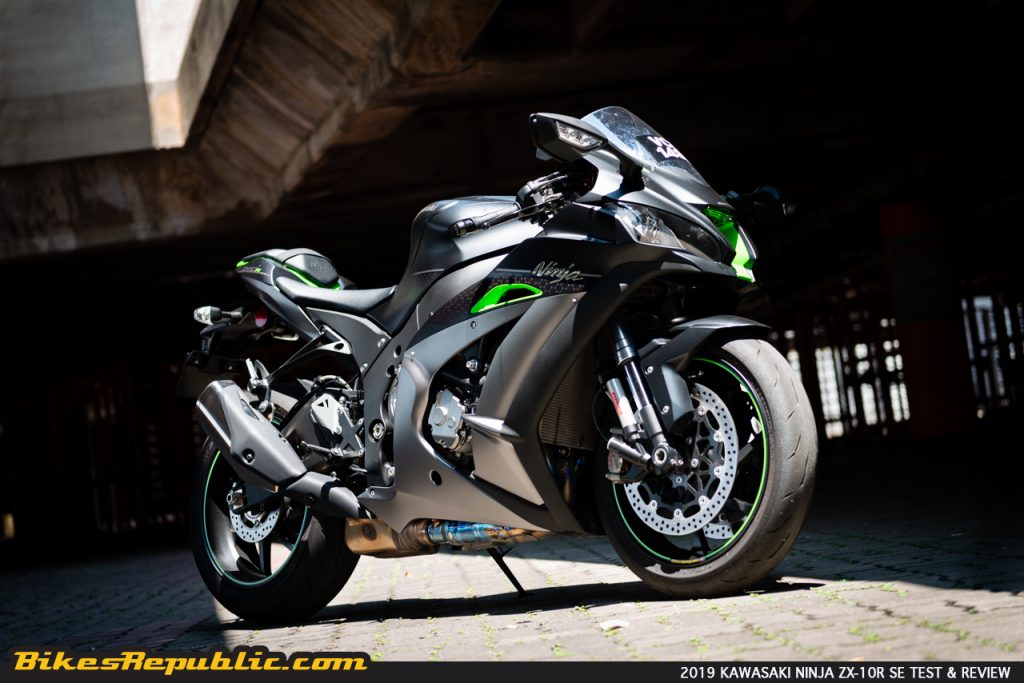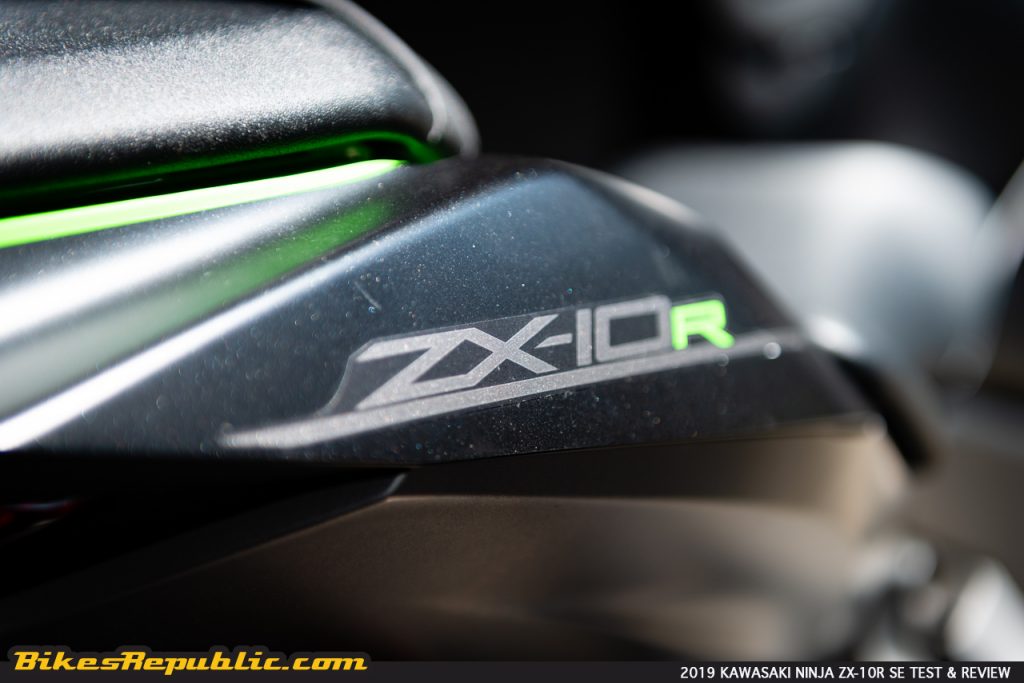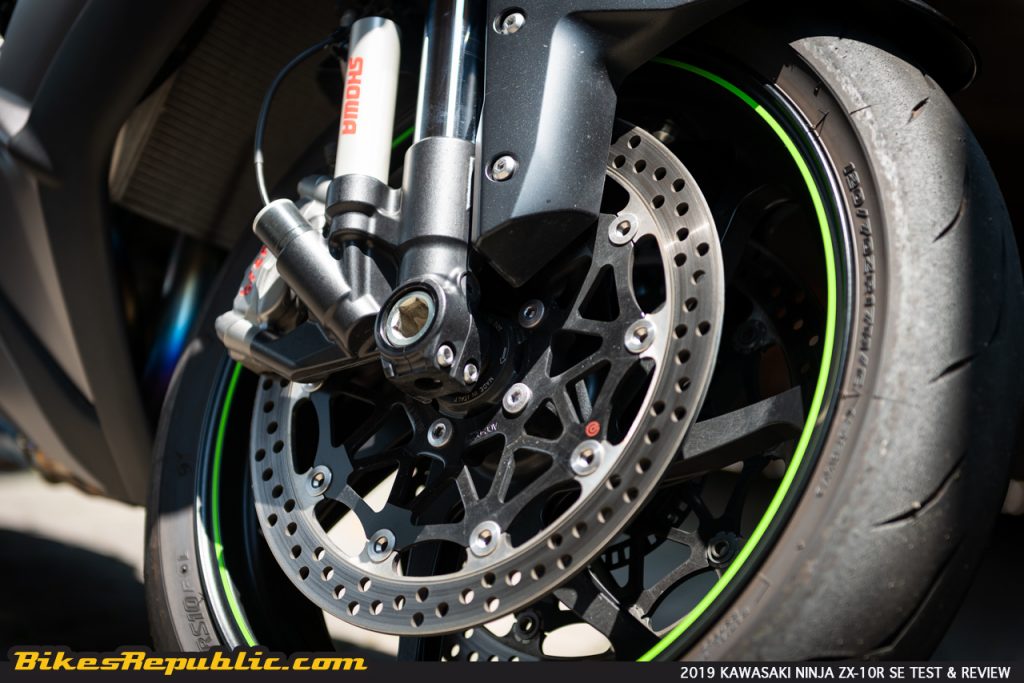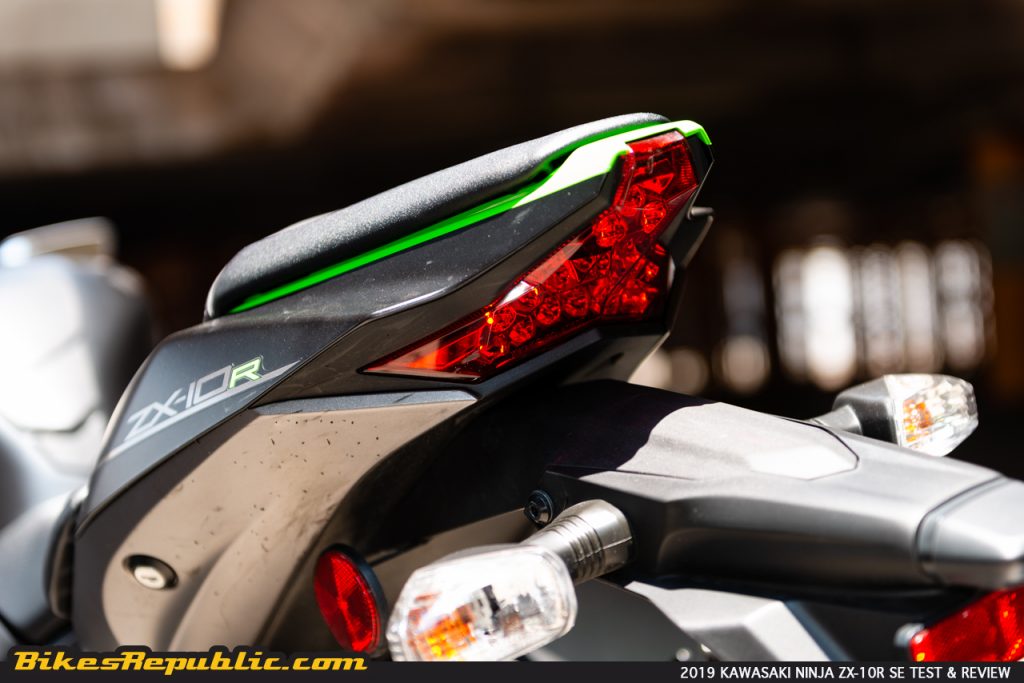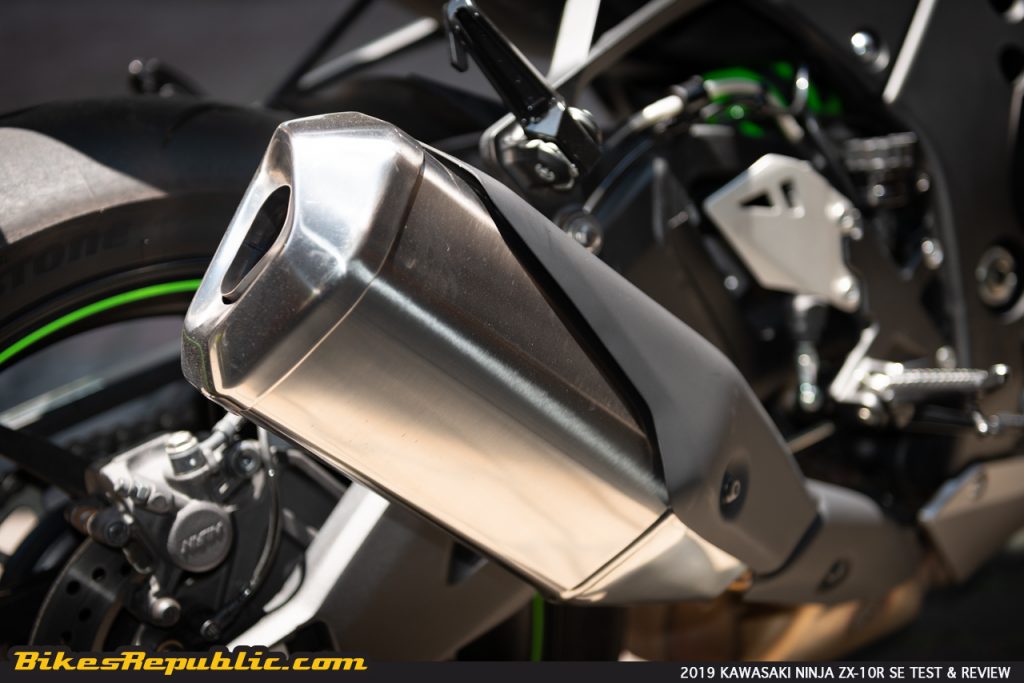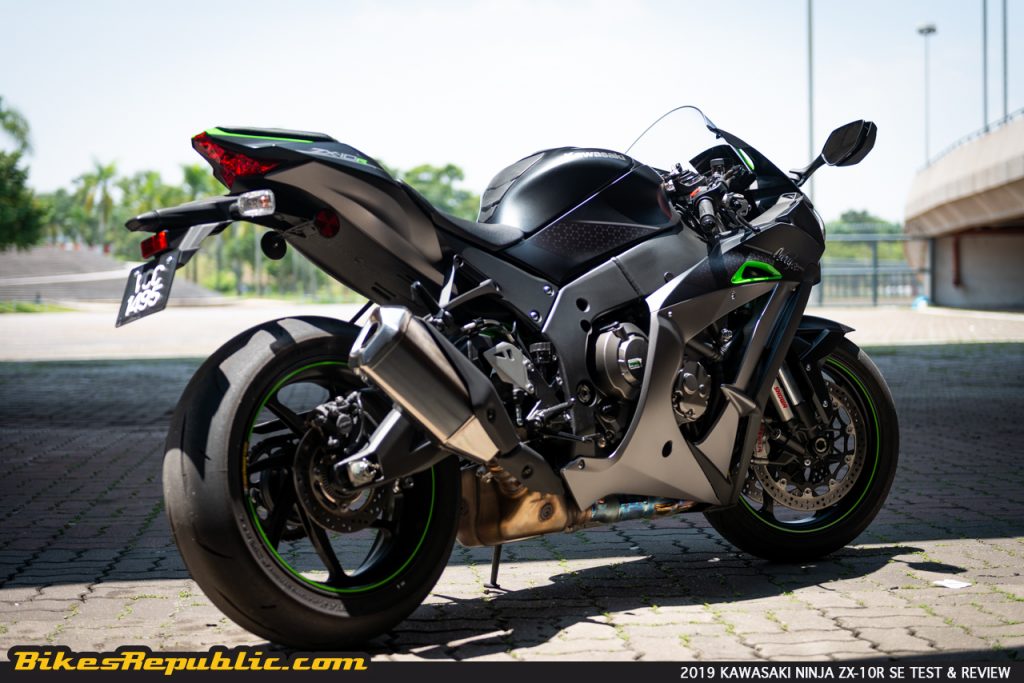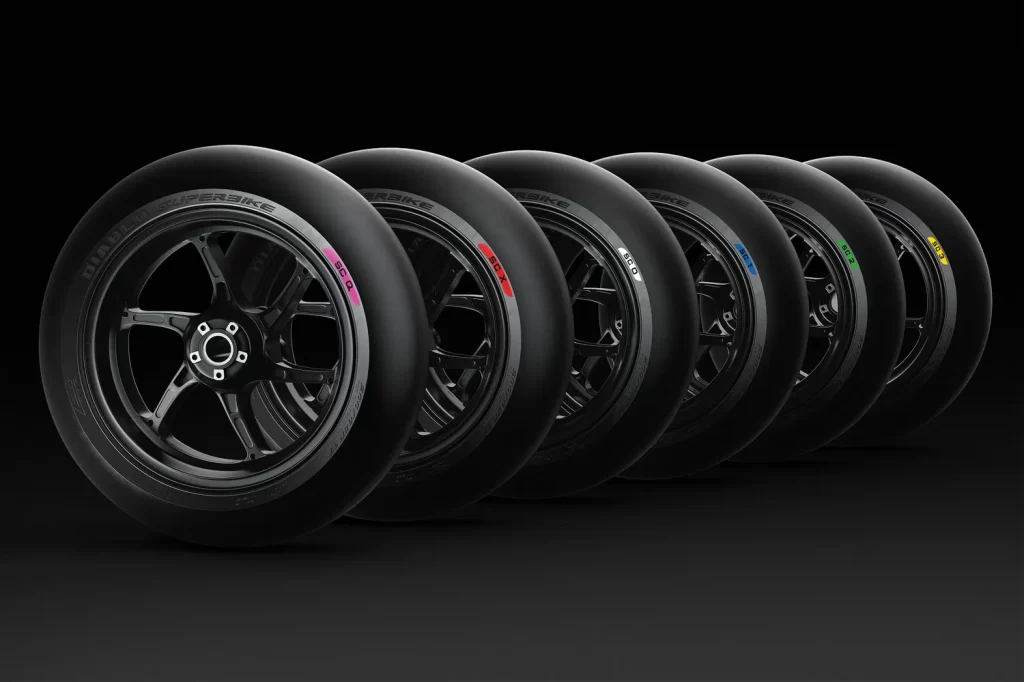-
The 2019 Kawasaki Ninja ZX-10R SE may look the same as its predecessor, but it has gone through a number of revisions.
-
Apart from the cylinder head and valvetrain, the SE variant has an electronic semi-active suspension.
-
It’s a great bike to ride on the street and the track.
Fans of the World Superbike Championsip will know that Kawasaki had won the series four times in a row. Now they’re back with the 2019 Kawasaki Ninja ZX-10R SE.
Now, before going further, on-track results is one thing, but the bikes you and I can buy is quite another. That’s because despite WorldSBK is a production-based series, the bikes on the track have very few similarities to what’s available at the motorcycle dealer near you.
This is why certain sportbikes fare better in the real world, in exact opposite the results on the track. Case in point? This very bike.
Introduction
The 2019 Kawasaki Ninja ZX-10R SE is the middle-spec’ed bike between the base Ninja ZX-10R and Ninja ZX-10RR. The latter is the homologation model for superbike racing.
Kawasaki had only revised the bike slightly for 2019. I guess why fix it if it ain’t broke.
The revisions are:
- More compact cylinder head to promote quicker combustion.
- The cam lobes operate directly on finger followers rather than on tappets. It results in a 20% mass reduction.
- Also, the cam lobes can be more aggressive.
The revisions are aimed at making the engine rev quicker and raise the rev limit. The net result is 200 PS without ram air, and 213 PS at 13,000 RPM with ram air. Maximum torque is quoted at 114.9 Nm at 11,200 RPM.
Other features are:
- Kawasaki Electronically Controlled Suspension (KECS). The 2019 Ninja ZX-10R SE is the first Kawasaki to be equipped with a semi-active electronic suspension.
- Bosch IMU-based lean-sensitive traction control and cornering ABS.
- Öhlins electronic steering damper.
- Swingarm with optimized rigidity and longer in length.
- Brembo M50 Monobloc calipers gripping on 330 mm Brembo discs.
- Electronic throttle valves.
- Revised frame geometry moves the steering head closer to the rider.
- Kawasaki Quickshifter which works for up- and downshifts.
- “Self-healing” paint on parts that are prone to damage as like that on the 2019 Kawasaki H2.
- Marchesini forged aluminium wheels.
Riding Impression
Phew, that’s a lot of stuff.
First thing we did was to check out the ride modes. There are three power levels: F (Full), M (Medium), and L (Low). We left it in F. Next, we selected the KEBC – engine braking control to on. And finally, we chose “ROAD” for the suspension.
The seat is quite high up, as with all sportbikes. However, the clip-ons are not as low as other bikes and definitely closer to us. That way, the bike doesn’t stretch you out like a spaghetti. The rearsets are high up but further towards the front than its contemporaries.
First thing we notice was that it was pretty easy to steer through tight spots at low speeds. The higher clip-ons doesn’t cause you to press down on them while at crawling speeds. Consequently, it didn’t take huge effort to turn the front wheel.
The bike got rolling smoothly when we let out the clutch. From there, gearshifts were managed by toeing the quickshifter. Shift action was buttery smooth even when dropping down to first gear. The system blips the throttle automatically, so you don’t get chucked into the tank when you downshift.
We were surprised by the power delivery. Sure, it still has that primal acceleration, but you could doddle around in 60 km/h in 4thgear without the engine loping or chattering like mad. Throttle response was very exact and smooth due to the wide powerband. So smooth, the throttle and engine response had the quality of a sport-tourer’s when ridden in the city.
However, the thing that impressed us the most was the KECS electronic suspension. The system is mated to Showa’s already excellent Balance Free Forks (BFF) and Balance Free Rear Cushion (BFRC) shock. On paper, it sounds like the same semi-active systems from Sachs and Öhlins, but this system is faster in its actuation. The solenoid valve has a direct, one-stage actuation. As a result reaction time is only 1 ms (1 milisecond equals 0.001 second), and is claimed to be the fastest system currently available. Not only that, the KECS’s dedicated ECU receives information from the suspension sensors in every 1 ms, 10 ms from the IMU and 10 ms from the road speed sensor. It will then decide on the best strategy and sends signals to the solenoid actuators every 1 ms. It means that the suspension adapts to road conditions faster and more correctly.
The rider can choose among RACE, ROAD and USER modes. The last mode allows you to set your own damping rates.
Ridden on the streets in ROAD mode, the suspension felt much more comfortable than that of any sportbike we’ve ever tested. Bumps were felt, of course, but they were nicely cancelled out. Again, it felt like a more aggressively tuned sport-tourer. Only the sharpest and gnarliest bumps are fully felt but there’s no danger of bruising your kidneys. Even my wife found it comfortable as a pillion!
However, comfortable as it was, the suspension never wallowed or bottomed out like if you had tuned it too soft.
Amazing!
But of course, what’s a sportbike without corner blasting. Karak Highway and Genting Highlands were again the testing grounds.
Speed built up quickly as you wind on the power and you watch the light bars rise quickly on the tachometer. The engine returned a pop everytime we shifted up or down. The speed piled on so quickly that it’s like going into warp speed in slo-mo. Yet, the bike was rock solid in a straight line.
But corners were its vocation as it swept through them at mighty speeds. Choose your line and steer: That’s all you needed to do. The only thing which stopped us at riding faster was the size of the fuel tank. It’s rather wide on top and at the sides, thus needing more practice for side-to-side transitions. Nevertheless, the wide tank made it easy to clamp your knees on them when you fire the retro rockets.
Speaking of braking, the brakes were what you would expect of Brembo Monoblocs. But there’s a small difference here. Feel was good and you know how much you modulate the brake pressure at the lever. Only thing was, it lacked the aggressive initial bite that some riders like. For us though, the feel was truly impressive as we trail-braked hard into the sharper corners when heading up the mountain. That and the superb suspension action allowed us to brake at the last moment and hold on to the brakes much deeper into corners. The only limitation is the rider’s abilities.
The older ZX-10s touched down on the footpegs quickly, but not this 2019 model. You have to lean so far over at such high speeds that if you did, it’s an indication that you’re riding too fast on the streets.
Conclusion
The 2019 Kawasaki Ninja ZX-10R SE is a sportbike that you could live with on a daily basis. The manufacturer had done so much to make it a great bike to ride not only the tracks but, on the streets, for everyone.
The amazing thing about this bike is how easy it was to be completely brutal one moment, then putter around in traffic without complaining. For example, it completely blew away everyone away at Genting and Karak, then cruised home along the Middle Ring Road 2. And oh, it didn’t attempt to roast you alive at the traffic lights, either.
Plus, the suspension doesn’t pulp your internal organs.
It’s almost like a beginner’s bike when you take it easy, but an MSBK rider’s weapon at full aggression.
Highly recommended.
PICTURE GALLERY
TECHNICAL SPECIFICATIONS
ENGINE |
|
| ENGINE TYPE | 4-stroke, DOHC, liquid-cooled, inline-Four |
| DISPLACEMENT | 998 cc |
| BORE x STROKE | 76.0 mm x 55.0 mm |
| POWER | 203 PS (149.3 kW) @ 13,000 RPM without ram air, 213 PS (156.8 kW) @ 13,000 RPM with ram air |
| TORQUE | 114.9 Nm @ 11,200 RPM |
| COMPRESSION RATIO | 13.0:1 |
| TRANSMISSION | Constant mesh, 6 speed, bi-directional quickshifter equipped |
| FUEL SYSTEM | Electronic fuel injection with ride-by-wire throttle |
| CLUTCH | Multiple-plate wet clutch with slipper feature, cable operated |
| CHASSIS | |
| FRAME | Twin-spar, cast aluminium |
| FRONT SUSPENSION | Upside-down ø 43 mm Showa Balance Free Forks (BFF), electronically controlled damping, manual adjustment for spring preload |
| REAR SUSPENSION | Showa Balance Free Rear Cushion (BFRC) monoshock with Uni-Trak link. Electronically controlled damping with manual spring preload adjustment |
| SUSPENSION TRAVEL FRONT/REAR | 120 mm / 114 mm |
| FRONT BRAKE | 2 X 4-piston Brembo M50 Monobloc calipers, ø 330 mm Brembo floating discs |
| REAR BRAKE | 1 X single-piston floating caliper, ø 220 mm brake disc |
| ABS | IMU-based Cornering ABS |
| TIRES FRONT/REAR | 120/70ZR17; 190/55ZR17 |
| STEERING HEAD ANGLE | 25o |
| TRAIL | 107 mm |
| WHEEL BASE | 1440 mm |
| SEAT HEIGHT | 835 mm |
| FUEL TANK CAPACITY | 17 litres |
| KERB WEIGHT | 208 kg |

